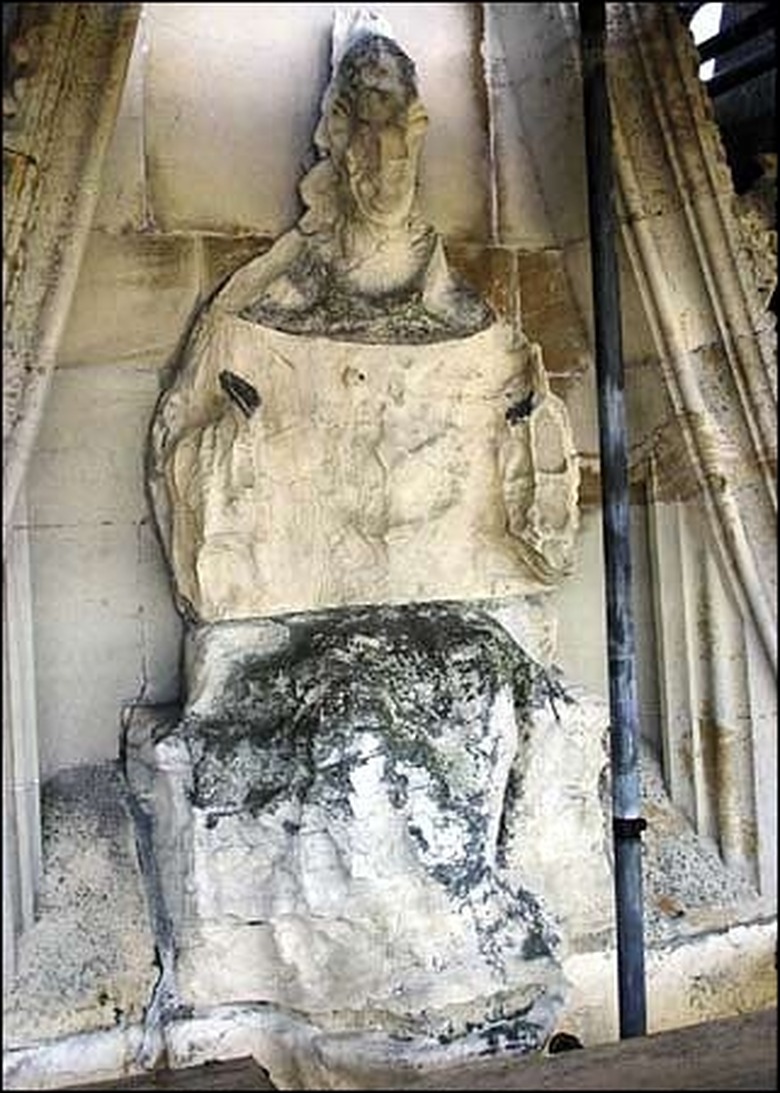Negative Effects Of Acid Rain
Acid rain is caused by certain types of pollution that release carbon, sulfur dioxide and similar particles into the air. These particles mix with water vapor and give it an acidic quality that continues as the water vapor is gathered into clouds and falls as rain. This higher acidic content has been linked to several hazardous effects.
Chemistry
Chemistry
Chemically, acid rain is caused when carbon dioxide floats through the atmosphere and combines with water. The H2O of water and the CO2 mix to form H2CO3, an acid solution. While this is a more common type of acid rain, other contaminants such as sulfur dioxide and nitrous oxide can form different types of acids in their own right. These acids can react with different minerals on the Earth's surface, most notably calcites like limestone. The limestone is dissolved by the acid, but in the process the acidic levels of the rain are counteracted and dissipated.
Human Structures
Human Structures
Some of the greatest damage from acid rain occurs on human structures. This is seen in the well-known examples of rapid wear on stone buildings and outdoor statues made from marble or other calcite materials. The acid interacts with this stone and eats it away, which neutralizes the dangerous effects the acid may have on wildlife, but also ruins the artistry and usefulness of certain stonework. This also holds true for certain kinds of paint, especially automotive paints, in which etching and wear have been noted.
Water
Water
Rain naturally seeps into groundwater and runs through soil to surface water, such as streams and lakes. On its way toward groundwater, the acid rain is often neutralized by the minerals it encounters, but runoff into surface water can pose more dangerous problems. First of all, all lakes and streams have a general pH level (often between 6 and 8) that allows natural organisms to survive in the local area. If this balance is made too acidic, it can kill some kinds of smaller organisms, which in turn affects the entire food chain. Additionally, acidic rain can expose certain metals in the surrounding stone and wash them into the water. Some metals, such as aluminum, are toxic to surrounding wildlife.
Forests
Forests
The damage acid rain can cause to forests depends on the buffering abilities of the soil. Soil that can neutralize acid rain well will protect the trees from significant damage, while soil with low buffering qualities will allow the acid rain to be absorbed by trees or will release toxic metals into the earth that can damage plant life. Acid rain can also cause damage to leaves on broadleaf trees, inhibiting their ability to photosynthesize. While this rarely kills trees outright, the combined factors can halt growth and slowly destroy forests.
Human Health and Visibility
Human Health and Visibility
Acid rain can cause significant visibility problems, due to the emissions that rise through the air and mix in with the water vapor. This can hamper both enjoyment of scenery and, more importantly, activities in which visual clarity is necessary, such as looking for fires. The acidic properties of the rain have only been shown to adversely affect human health when inhaled through the lungs. The acid particles can be absorbed through the lung tissue and cause lung and heart problems over time.
References
Cite This Article
MLA
Lacoma, Tyler. "Negative Effects Of Acid Rain" sciencing.com, https://www.sciencing.com/negative-effects-acid-rain-5367840/. 24 April 2017.
APA
Lacoma, Tyler. (2017, April 24). Negative Effects Of Acid Rain. sciencing.com. Retrieved from https://www.sciencing.com/negative-effects-acid-rain-5367840/
Chicago
Lacoma, Tyler. Negative Effects Of Acid Rain last modified March 24, 2022. https://www.sciencing.com/negative-effects-acid-rain-5367840/
